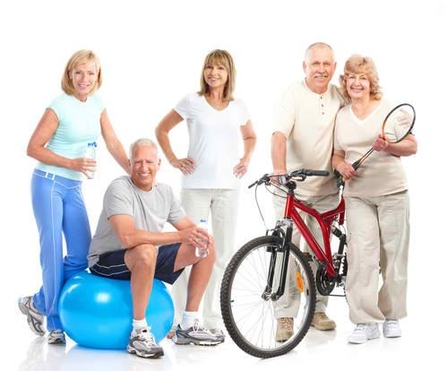Once you reach age 65, you can expect to live another 15 to 25 years. Obviously, how long you live will depend on many factors. But most men and women of average health routinely live into their 70s and 80s. Unfortunately, the natural aging process produces a drastically different body as a senior citizen, inside and out, than when you were younger.
This is because your physiological processes, your physical body and your brain all change as you age. This is simply a fact of life. Think back to different periods of your life and you can see these changes taking place. You were drastically different physically when you were 35 to 45 years old than when you were 15 or 20.
Most people become keenly aware of this when they start looking at their family photos from years past.
At 65 and older, you know that your body has changed over the years and will continue to do so. The key to living the fullest, happiest, healthiest life at any age is understanding exactly how your body changes over time.
Muscle Makeup.
One of the most significant changes you will notice over the years is a loss in physical strength, which leads us to one of the most notable and frustrating changes seniors experience changes in body composition and loss of muscle mass.
This is because in your 20s and 30s you start to lose significant muscle mass. After the age of 35, people lose as much as 5% to 7% of their muscle mass every decade. For people who live a sedentary life, with little physical activity, their muscle mass loss is even greater.
Changes in your skin
Starting in your 40s and 50s you can start seeing dramatic changes in how your skin looks and feels. Your skin actually becomes flatter and thinner as you age. This is because you lose subcutaneous fat, oil glands, hair follicles and skin cells due to the natural aging process.
In most cases these changes aren’t a threat to your health. You may not be happy that wrinkles, freckles and age spots are appearing more frequently. However, these are vanity issues and not life-threatening, for the most part. As you age and your skin dries out, which leads to wrinkling and sagging. Again, these are cosmetic changes and not usually physical problems.
Bone and Joint Changes
Men and women start losing bone density and strength in their 30s. The rate of loss gradually increases, and your bones actually begin shrinking in size in your 50s and 60s. Women are more prone to bone-related health problems like osteoporosis than men are, but all everyone will experience weaker bones and joints as they age. Another bone related issue is increased inflammation as a result of normal, everyday wear and tear can become painful as your bones and joints lose their strength.
Physical Mobility Is Decreased
Reduced mobility is another road bump that we face while aging. Balance, flexibility and mobility are all negatively affected by the aging process. This has a lot to do with some of the changes mentioned above. The fact that seniors fall more frequently than younger people is usually related to decreased mobility.
Other Age-Related Changes
You will also suffer neurological, cardiovascular, urinary, endocrine, immune system, gastrointestinal and a myriad of other changes as you grow older. Your physical body shape will change as your metabolism slows down. Your face may be markedly different in your 60s than it was in your 30s or 40s. Your teeth, gums, hands, feet, hair, nails, hormones and even emotions all change as a part of the natural aging process.
Many people feel helpless when confronting the changes, they face with aging. They accept the fact that aging happens and they are doomed to be older, weaker and less active than they were in their 40s and 50s. Yes, aging happens but how it impacts your body and your life is under your control. By adapting a proactive approach to your health and fitness, you can slow the impact of aging and prolong the health and vitality you desire. The choice is yours.

